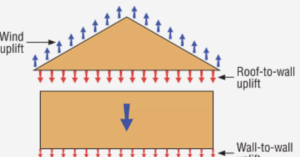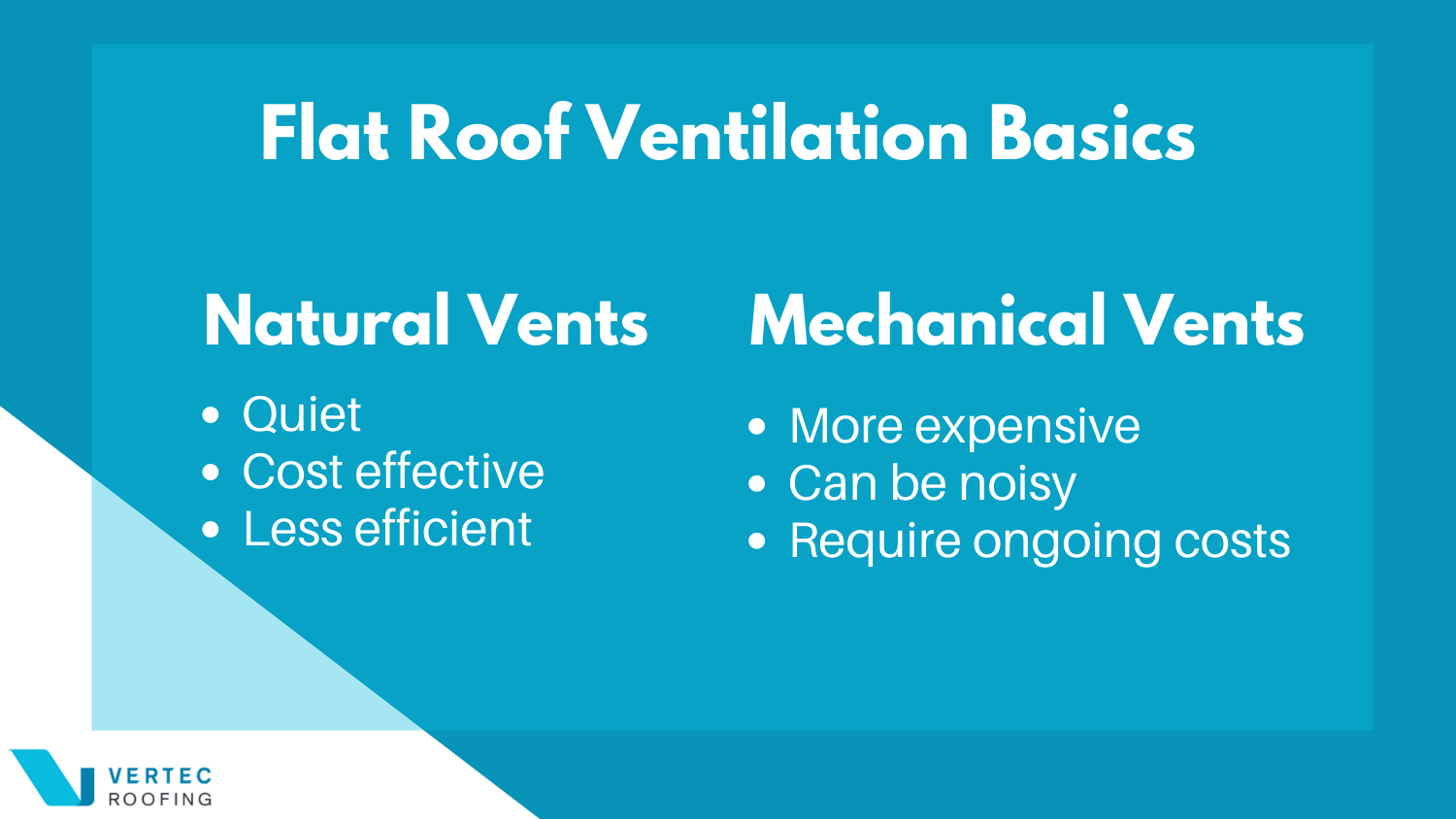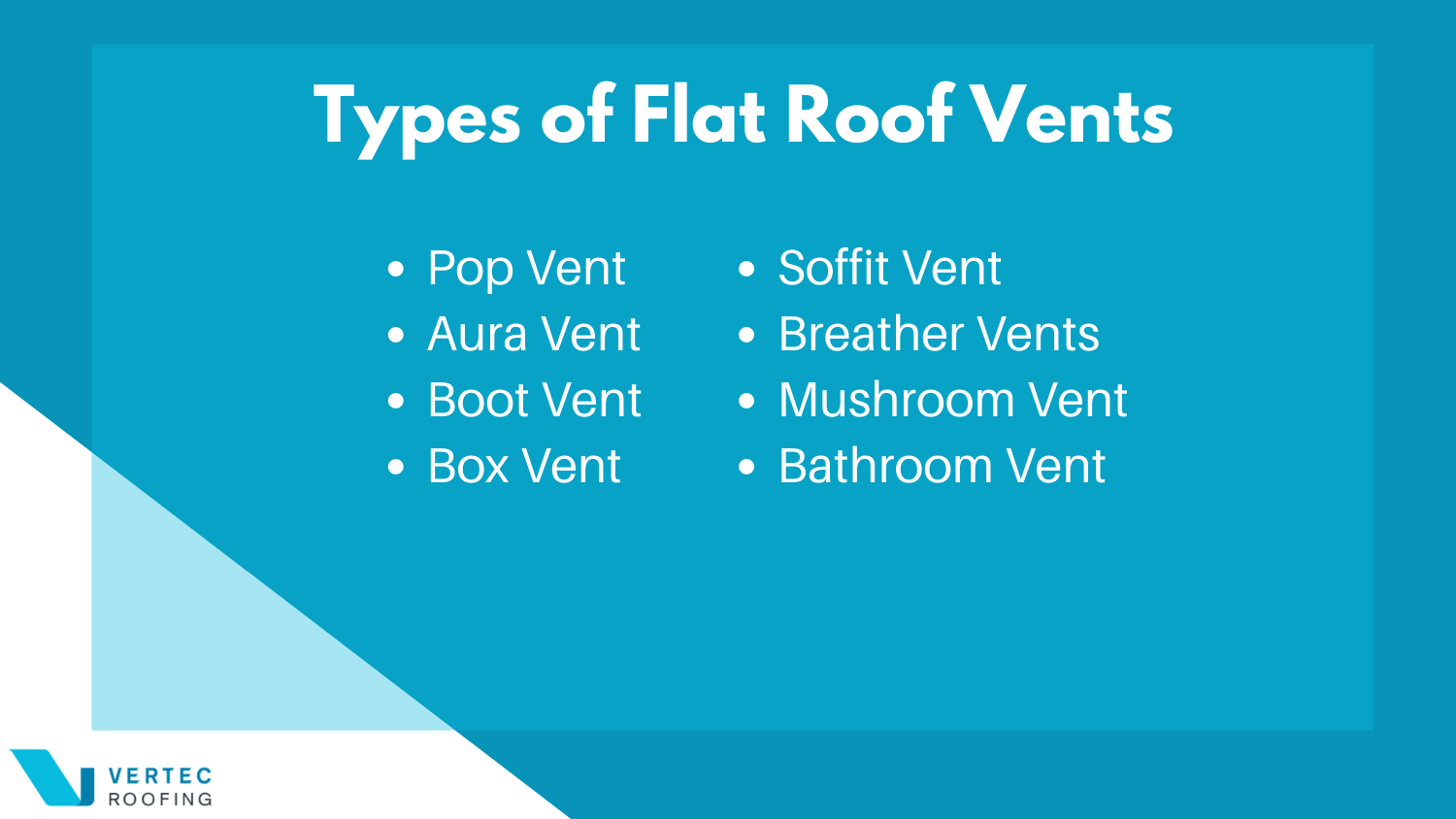

Whether you’re considering your commercial or residential property, roof ventilation is absolute necessary. Ventilation stabilises temperature extremes, reduces energy costs and extends the life of your roof. The same goes for your flat or low slope roof.
Most notably, a roof without adequate ventilation will have a short life and make the occupants pretty miserable. With no ventilation, the roof is subject to extreme temperatures, which over time will cause damage. Following on from this, these temperature differences can lead to condensation, can build up and rot roofing materials due to the excess moisture. Condensation occurs when hot internal air has nowhere to go, and once it comes into contact with the roof (external temperatures have cooled that), it condensates the moisture in the air.
Ventilation works by allowing hot air that contains the most moisture to escape and cool, fresh air to replace it. This stops the water from condensing as it normally would when the hot air reaches the top of the roof, which is cold due to the external temperatures.
All in all, it should go without saying that ventilation is absolutely critical for all types of roofs.
The quick answer is yes. However, the type of roof you have will determine how much ventilation is needed. Generally, cold roofs require less ventilation than hot roofs as cold roofs are built with natural ventilation, but ventilation is still necessary.
So, what are flat roof condensation solutions? To explore further, we need to discuss flat roof venting options to find the best roof vent for low slope roofing materials.
Let’s start with the basics. Roofing vents can be broken down into two main categories: natural and mechanical.

Natural vents use natural air movement and thermodynamic forces to circulate air in and out of the roof.
Mechanical vents, on the other hand, require power to create airflow and ventilation mechanically.
Both methods are used to create airflow within a roof. However, there is a critical difference in these methods, whether or not they require power. Both natural and mechanical vents have their positives and negatives, and you’ll need to make a decision based on which is best suited to your property.
Mechanical vents are more efficient but cost more, can be noisy and require ongoing costs like electricity. Natural vents are quiet and cost-effective but aren’t as efficient and require more vents for the same output, which isn’t necessarily aesthetically pleasing.
Let’s dive in further and look at more specific flat roof venting options from these two categories. Here are the main venting options available:
A pop vent or louvred pop vent is a mechanical vent that uses an electric fan to create airflow. Widely used in homes with flat roofs, a pop vent has become a popular choice through its ability to bring in fresh external air from the outside or remove hot internal air from the roof cavity.
An aura vent can be either mechanical or natural (it has no moving parts, giving it a long life). As a natural vent, it is known as an aura gravity roof vent and dynamically removes heat when it’s hot and moisture when it’s cold. The mechanical version looks the same from the outside, but it contains a fan in its internal structure used to force hot air out and draw fresh air into the roof.
A boot vent is very basic and consists of piping placed through the roof with a rubber boot to stop leaking. Quite popular due to its simplicity, you may run into problems as the rubber starts to crack and deteriorate, which can happen in extreme temperatures or temperature changes.
A box vent is another simple vent. Looking just like a box, the vent needs decent airflow to push air out of the roof. This means they generally work better on flat roofs or roofs with a lower pitch. However, they are usually small in size, and a property may require additional box vents to add proper ventilation.

A pop vent or louvred pop vent is a mechanical vent that uses an electric fan to create airflow. Widely used in homes with flat roofs, a pop vent has become a popular choice through its ability to bring in fresh external air from the outside or remove hot internal air from the roof cavity.
Breather vents are great at expelling moisture from flat roofs. They use a bellow that opens and closes depending on the moisture levels. Due to the low pitch of flat roofs, moisture and air can’t always flow freely between different roof sections; therefore, a number of breather vents are ideal to expel moisture adequately. As they work off pressure, breather vents are highly effective.
A mushroom vent is a simple natural vent that isn’t necessarily suited to a flat roof because it relies on the pitch to expel hot air and an intake vent to draw in the fresh air. So, unless you have soffit vents or mechanical intakes, mushroom vents are not ideal flat roof venting option.
This type of vent is specific for the bathroom and made to handle a large amount of steam and moisture. It needs to be mechanical to handle the large volume of steam and lends itself to a flat roof as it can be situated directly above the bathroom ceiling.
Choosing the right flat roof venting options for your roof can be hard, especially if you’re not someone that knows all that much about roofing. However, ventilation plays a massive role in the functionality, life and efficiency of your roof. Ventilation will not only prolong the life of your roof, but it will also help regulate temperature and reduce your energy costs; so, finding the right flat roof venting options is of utmost importance.
Vertec Roofing is Sydney’ leading specialists in flat roof ventilation replacement and instalment. Using only top-quality materials, Vertec will ensure that your flat roof ventilation is effective, long-lasting, durable and increase the comfort of your property. If you’d like to enquire about flat roof ventilation today, get in touch with the experts at Vertec Roofing.

At Vertec Roofing, we believe roofing is about protecting homes and enhancing comfort.